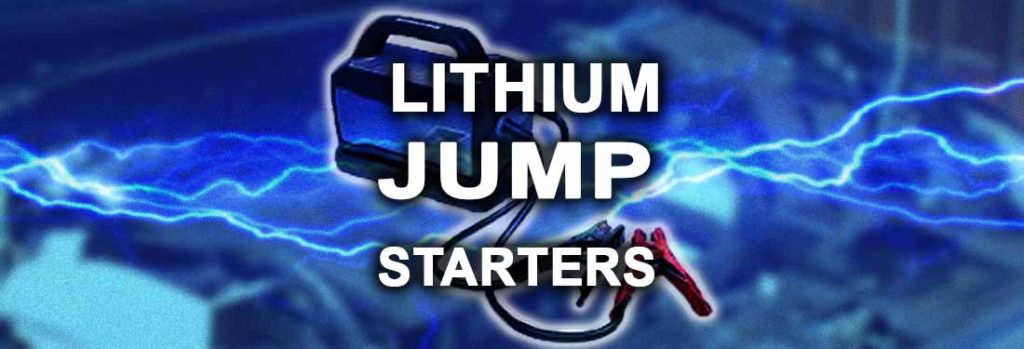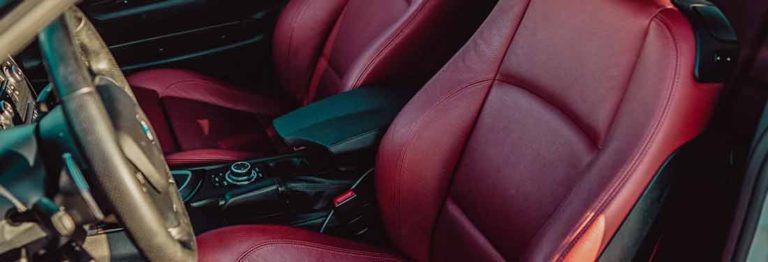
How Do Lithium Car Battery Jump Starter Packs Work?
Lithium batteries are used in a wide range of devices. Automotive batteries are a bit different but they are the main component that starts an engine.
Sometimes they can fail to start a car depending on how old they are or if they got discharged.
This can happen for a wide range of reasons including trivial things such as forgetting the headlights on or having a consumer that drains the battery even after the ignition is turned off.
In these cases, the only way to start a car is to use a lithium jump starter or a jump starter cable.
Using a cable means that a second car is needed thus this is the more inconvenient approach. Lithium jump starters are the more convenient option.
What are lithium jump starters?
Lithium jump starters are simple devices that have several battery cells that can support a large output of power over a very short period.
They cannot sustain the discharge rate required to start a car for more than a couple of seconds.
To control this discharge, the jump starter uses a control board that immediately cuts power after discharge to protect the lithium cells.
How do they work?
In most cases, lithium jump starters use battery cells. The most common ones used are 18650 battery cells. To make the jump starters, manufacturers use battery cells with high discharge rates.
The trade-off of using cells with higher discharge rates is that they have a smaller capacity.
Regardless of the capacity, they should be capable of a total discharge output of at least 400 amps at least once, depending on how many cells are being used.
High discharge rate
If a high discharge rate is maintained for more than a couple of seconds, the lithium cells inside can overheat and even explode in some extreme conditions.
To protect the lithium jump starter from such events, a logic board is used to control the discharge of the cells.
Depending on the capacity of the jump starter, it can provide up to 600 amps for regular cars. Jumpstarters for commercial vehicles can go as high as 2000 amps.
Since these jump starters can store a certain amount of energy, they can be used multiple times to jump-start a car.
The number of jump-starts is variable depending on the capacity and discharge rate.
Rechargeable cells
As jump starters use rechargeable cells, they can be reused multiple times. The number of recharge cycles is variable depending on the quality of the cells used.
Cheap lithium jump starters usually do not have the advertised power or use low quality lithium cells.
The logic board inside the jump starter should control the discharge rate and the charging of the battery cells.
These logic boards also add to the cost of a jump starter as they can be expensive depending on the quality of the parts used and how they are designed.
Additional features
Additionally, these boards may also have additional features such as supplying power to mobile devices using a built-in USB port, have a flashlight, and several other perks that may prove to be less useful.
A decent jump starter should just work as a power bank or as a jump starter. Anything else does not add much value.
Words of caution
If you want to jump-start your car, you should ensure that all energy consumers are off.
This means the AC needs to be turned off, headlights and hazard lights have to be off and the ration must not be used. When you jump start your car, all the power should go to starting your engine.
Correct connection to terminals
Another important thing to note is to connect the lithium jump starter correctly. The red cable must be connected to the positive terminal while the black one should be connected to a grounded metal or the car’s frame.
Once the clamps are secured, it is safe to try starting the car. Make sure that while you connect the jumper cables, the jump starter is off. Once connected, turn on the jump starter and then try starting the engine.
Removal of clamps
When the engine is running, turn off the jump starter before removing it. Remove the clamps and avoid touching them.
Even if the jump starter is turned off, you should still be careful when handling the cables.
Do not forget to recharge your jump starter after using it a couple of times to ensure that you will be able to use it in case of an emergency.
Ever wondered about the differences between a battery charger and a jump starter?
Read this guide to find out the differences between a battery charger and a jump starter.
Popular Posts






